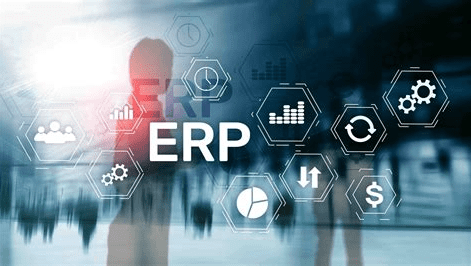Erp systems for distribution
Welcome, dear reader! In today’s fast-paced business world, companies are constantly looking for ways to improve their distribution efficiency. One highly effective solution that has been gaining popularity is the use of Enterprise Resource Planning (ERP) systems. By implementing ERP solutions, businesses can streamline their distribution processes, reduce costs, and enhance overall operational efficiency. In this article, we will explore how ERP solutions can help businesses optimize their distribution operations and stay ahead of the competition.
Benefits of ERP Systems for Distribution Companies
ERP systems provide distribution companies with a wide range of benefits that can help streamline their operations, improve efficiency, and increase profitability. One of the key advantages of using an ERP system for distribution is the ability to centralize and automate processes. With an ERP system, companies can consolidate all their data and operations into a single, integrated platform, making it easier to track inventory, manage orders, and analyze sales data. This centralized approach helps eliminate duplicate data entry, reduce errors, and improve overall accuracy.
Another major benefit of ERP systems for distribution companies is the improved visibility and control they provide over all aspects of the business. With real-time access to data and analytics, companies can make more informed decisions, identify trends, and proactively address issues before they become problems. This increased visibility also allows for better forecasting and planning, helping companies optimize inventory levels, reduce costs, and improve customer service.
ERP systems also help distribution companies improve their customer service and satisfaction levels. By centralizing customer data and order information, companies can provide faster response times, accurate order tracking, and personalized service. This not only helps build stronger relationships with customers but also enhances the overall customer experience, leading to increased loyalty and repeat business.
Furthermore, ERP systems can help distribution companies streamline their supply chain management processes. By integrating suppliers, manufacturers, and distributors into a single system, companies can improve coordination, communication, and collaboration throughout the entire supply chain. This leads to faster order processing, reduced lead times, and improved inventory control, ultimately resulting in lower costs and higher efficiency.
In addition to operational benefits, ERP systems can also help distribution companies comply with industry regulations and standards. By providing tools for tracking and reporting on key metrics, companies can ensure they are meeting all legal requirements and industry guidelines. This not only helps avoid fines and penalties but also demonstrates a commitment to quality and compliance, which can enhance the company’s reputation and attract new business opportunities.
Overall, ERP systems offer distribution companies a comprehensive solution for managing and optimizing their operations. From streamlining processes and improving visibility to enhancing customer service and ensuring compliance, ERP systems provide a wide range of benefits that can help companies stay competitive in today’s fast-paced business environment.
Key Features to Look for in a Distribution ERP System
When selecting an ERP system for your distribution business, it is important to consider the key features that will best meet your company’s needs. One crucial feature to look for is inventory management capabilities. A good distribution ERP system should provide real-time visibility into your inventory levels, allowing you to track stock movements, identify trends, and make informed decisions about purchasing and stocking. The system should also offer advanced forecasting tools to help you optimize inventory levels and reduce the risk of stockouts or overstocking.
Another important feature to consider is order management functionality. A robust distribution ERP system should streamline the order-to-cash process by automating order entry, processing, and fulfillment. This can help reduce errors, improve order accuracy, and increase overall efficiency. Additionally, the system should support multiple sales channels, including e-commerce platforms, to facilitate seamless order processing across all channels.
Vendor management capabilities are also essential for a distribution ERP system. The system should allow you to easily manage vendor information, track vendor performance, and automate procurement processes. This can help you build strong relationships with your suppliers, negotiate better terms, and ensure timely delivery of goods. Integration with supplier portals or EDI systems can further enhance communication and collaboration with your vendors.
Furthermore, warehouse management features are key to maximizing efficiency and accuracy in your distribution operations. Look for a distribution ERP system that offers advanced warehouse management tools, such as barcode scanning, pick and pack workflows, and automated replenishment. These features can help you optimize warehouse layout, improve order fulfillment speed, and reduce picking errors.
Lastly, reporting and analytics capabilities are crucial for gaining insights into your distribution business and making data-driven decisions. A good distribution ERP system should provide customizable dashboards, KPI tracking, and real-time reporting to help you monitor performance, identify trends, and forecast future demand. Integration with business intelligence tools can further enhance your ability to analyze data and extract valuable insights.
How ERP Systems Improve Inventory Management in Distribution
Inventory management is a critical aspect of distribution operations, as businesses need to ensure they have the right amount of products in stock to fulfill customer orders without overstocking and tying up capital. Implementing an ERP system can greatly improve inventory management in distribution by providing real-time visibility into inventory levels, automating replenishment processes, and optimizing warehouse operations.
One of the key benefits of ERP systems for inventory management is the ability to track inventory levels in real-time. This means that distribution companies can see exactly how much stock they have on hand, where it is located, and when it needs to be replenished. With this information readily available, businesses can avoid stockouts and overstock situations, leading to improved customer satisfaction and reduced carrying costs.
Furthermore, ERP systems can automate the replenishment process by setting up reorder points and reorder quantities based on historical sales data and lead times. This ensures that inventory is replenished in a timely manner, preventing stockouts and minimizing the risk of excess inventory. By automating these processes, distribution companies can free up time for employees to focus on more strategic tasks, such as analyzing sales trends and optimizing inventory levels.
In addition to real-time visibility and automated replenishment, ERP systems can also help optimize warehouse operations for better inventory management in distribution. By using features such as barcode scanning and RFID technology, businesses can accurately track inventory movements throughout the warehouse, reducing errors and improving inventory accuracy. This can lead to faster order fulfillment, reduced picking and packing errors, and ultimately, higher customer satisfaction.
Furthermore, ERP systems can provide valuable insights into inventory performance through advanced reporting and analytics capabilities. By analyzing key performance indicators such as inventory turnover, stockout rates, and carrying costs, distribution companies can identify areas for improvement and take proactive measures to optimize inventory management. This data-driven approach can lead to better decision-making, reduced costs, and increased profitability for distribution businesses.
In conclusion, implementing an ERP system can greatly improve inventory management in distribution by providing real-time visibility into inventory levels, automating replenishment processes, and optimizing warehouse operations. By leveraging these capabilities, distribution companies can reduce stockouts, improve customer satisfaction, and drive operational efficiency for long-term success in the competitive distribution industry.
Increasing Operational Efficiency with a Distribution ERP Solution
When it comes to managing a distribution business, operational efficiency is key to success. An Enterprise Resource Planning (ERP) system tailored for distribution companies can help streamline processes, increase productivity, and ultimately drive profitability. Here are four ways in which implementing a distribution ERP solution can boost operational efficiency:
1. Inventory Management: One of the biggest challenges in distribution is managing inventory effectively. A distribution ERP system can provide real-time visibility into your inventory levels, track stock movements, and help you optimize inventory levels. By having a clear view of your stock levels, you can avoid stockouts, reduce excess inventory, and improve order fulfillment rates. This not only helps in reducing carrying costs but also ensures that your customers receive their orders on time, leading to higher customer satisfaction.
2. Order Processing: Manual order processing can be time-consuming and error-prone. A distribution ERP solution automates the entire order processing workflow, from order entry to fulfillment. This eliminates the need for manual data entry, reduces the risk of errors, and speeds up the order processing cycle. With an ERP system in place, you can process orders more efficiently, track order status in real-time, and provide better visibility to your customers. This results in faster order fulfillment, reduced lead times, and improved customer service.
3. Supply Chain Optimization: In a distribution business, managing the supply chain is crucial for ensuring timely delivery of goods to customers. A distribution ERP system can help optimize your supply chain by providing tools for demand forecasting, supply planning, and logistics management. By analyzing historical data and market trends, you can make better-informed decisions regarding inventory replenishment, production scheduling, and transportation. This leads to improved supply chain efficiency, lower transportation costs, and minimized stockouts.
4. Reporting and Analytics: A distribution ERP solution offers robust reporting and analytics capabilities that enable you to gain insights into your business performance. With built-in dashboards and customizable reports, you can track key performance indicators, analyze sales trends, monitor inventory turnover, and forecast demand more accurately. By having access to real-time data and actionable insights, you can make informed decisions, identify areas for improvement, and drive operational efficiencies. Additionally, the ability to generate accurate reports quickly can help you comply with regulatory requirements and provide transparency to stakeholders.
In conclusion, implementing a distribution ERP solution is essential for increasing operational efficiency in your distribution business. By improving inventory management, streamlining order processing, optimizing the supply chain, and leveraging reporting and analytics capabilities, you can enhance productivity, reduce costs, and deliver better customer service. With the right distribution ERP system in place, you can stay competitive in today’s fast-paced business environment and achieve sustainable growth.
The Role of Data Analytics in Optimizing Distribution ERP Systems
Data analytics plays a crucial role in optimizing distribution ERP systems by providing valuable insights and enabling better decision-making processes. In today’s fast-paced business environment, companies are constantly looking for ways to improve efficiency and reduce costs in their distribution processes. By leveraging data analytics, organizations can gain a deeper understanding of their operations and identify areas for improvement.
One of the key benefits of data analytics in distribution ERP systems is the ability to track and analyze key performance indicators (KPIs) in real-time. By monitoring metrics such as inventory levels, order fulfillment rates, and transportation costs, companies can identify bottlenecks and inefficiencies in their distribution processes. This allows organizations to make data-driven decisions that can help improve overall performance and customer satisfaction.
Data analytics also plays a crucial role in forecasting demand and optimizing inventory levels. By analyzing historical sales data and market trends, companies can accurately predict future demand and adjust their inventory levels accordingly. This not only helps to minimize stockouts and overstock situations but also improves the overall efficiency of the distribution process.
Another important aspect of data analytics in distribution ERP systems is the ability to identify trends and patterns in customer behavior. By analyzing customer data, companies can gain valuable insights into buying patterns, preferences, and demographics. This information can be used to tailor marketing efforts, improve product offerings, and enhance the overall customer experience.
Furthermore, data analytics can also be used to optimize transportation and logistics operations. By analyzing data on shipping routes, carrier performance, and transportation costs, companies can identify opportunities to streamline operations and reduce expenses. This can lead to significant cost savings and improved efficiency in the distribution process.
In conclusion, data analytics plays a critical role in optimizing distribution ERP systems by providing valuable insights, improving decision-making processes, and driving overall efficiency in the distribution process. By leveraging data analytics tools and technologies, companies can gain a competitive edge in today’s rapidly changing business landscape.






